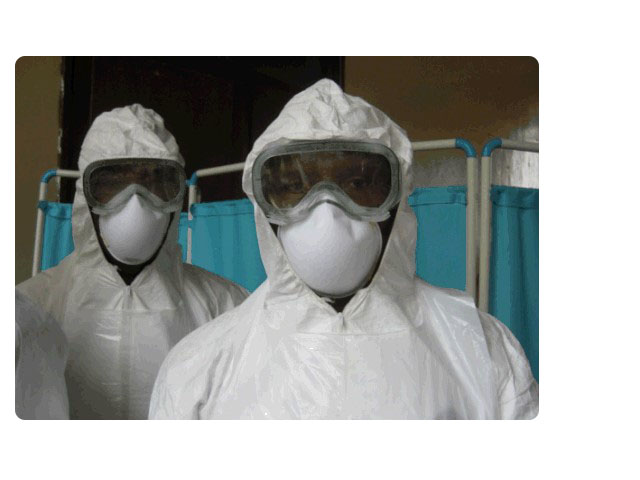Lassa Fever in West Africa
(Updated on 13 Mar 2018)

Lassa fever is caused by the Lassa virus that is transmitted to humans via rats belonging to the Mastomy genus. Individuals may acquire the virus via contact with the urine and faeces of an infected rat. Human-to-human transmission occurs when a person comes into contact with body fluids (i.e. blood, urine, and saliva) of an infected person. Sexual transmission of the Lassa virus has also been reported. The virus can also spread through unhygienic healthcare settings through improperly sterilized medical instruments, infected blood products, and lack of infection control gear such as masks, gloves and gowns. About 80% of people who become infected with Lassa virus have no symptoms, with 20% of people infected resulting in severe disease.
In order to reduce the risk of UN personnel and their dependents from contracting Lassa Fever, the United Nations Medical Directors (UNMD) have developed specific recommendations for UN personnel deploying to or residing in countries or areas known to be endemic for Lassa fever. Please consult these recommendations (English / French) and be sure to implement the UNMD’s instructions for the risk category that you fall under. These recommendations will be updated as new information and guidance become available.
For further information, please consult this UN Medical Directors’ Staff Information Brochure on Lassa Fever.
Here are some frequently asked questions about the disease.
What is Lassa fever?
Lassa fever is an acute viral haemorrhagic illness of 2-21 days duration that occurs in West Africa. About 80% of people who become infected with Lassa virus have no symptoms. 20% of infections result in severe disease, where the virus affects several organs such as the liver, spleen and kidneys. The overall case-fatality rate is 1%. Observed case-fatality rate among patients hospitalized with severe cases of Lassa fever is 15%. Early supportive care with rehydration and symptomatic treatment improves survival.
Where is Lassa Fever currently known to be endemic?
According to WHO, Lassa fever is currently known to be endemic in Benin, Ghana, Guinea, Liberia, Mali, Sierra Leone, Togo and Nigeria, and probably exists in other West African countries.
Any UN personnel residing in or traveling to the above countries or areas known to be endemic for Lassa fever should take the necessary precautions against the disease.
WHO Factsheet on Lassa fever
How do people become infected with Lassa Fever?
Lassa fever is a zoonotic disease, meaning that humans become infected from contact with infected animals. The animal reservoir, or host, of Lassa virus is a rodent of the genus Mastomys, commonly known as the “multimammate rat.” Mastomys rats infected with Lassa virus do not become ill, but they can shed the virus in their urine and faeces. Lassa virus is usually transmitted to humans via contact with food or household items contaminated with the rodent urine or faeces. Person-to-person infections and laboratory transmission can also occur, particularly in hospitals lacking adequate infection prevention and control measures.
What are the signs and symptoms?
Symptoms of Lassa fever include fever and chills, general weakness, headache, fatigue, malaise, muscle pain, chest pain, nausea, vomiting, diarrhoea and abdominal pain. If any suspicion or if you are feeling ill, seek medical advice immediately and remember to inform your medical practitioner, UN physician or your Organisation’s Medical Services about your recent travel to a Lassa fever affected area.
There is currently no commercially available vaccine or preventive medication against Lassa fever. However, if symptomatic, your doctor may choose to provide you with the antiviral drug Ribavirin, which can be effective for Lassa fever if given early on in the course of clinical illness.
Could one person get Lassa Fever from another person?
Yes, the virus also spreads between humans through direct contact with the blood, urine, faeces, or other bodily secretions of another infected person. Person-to-person transmission occurs in both community and health-care settings, where the virus may be spread by contaminated medical equipment, such as re-used needles. Sexual transmission of Lassa virus has also been reported.
What is the risk for UN personnel?
The risk of infection with Lassa Fever for international travellers to affected areas is generally low. However, UN personnel travelling to rural areas of Lassa fever-endemic regions may be at risk, particularly if camping or hunting or if contact with rats/rodents takes place.
For more information, please consult the following:
